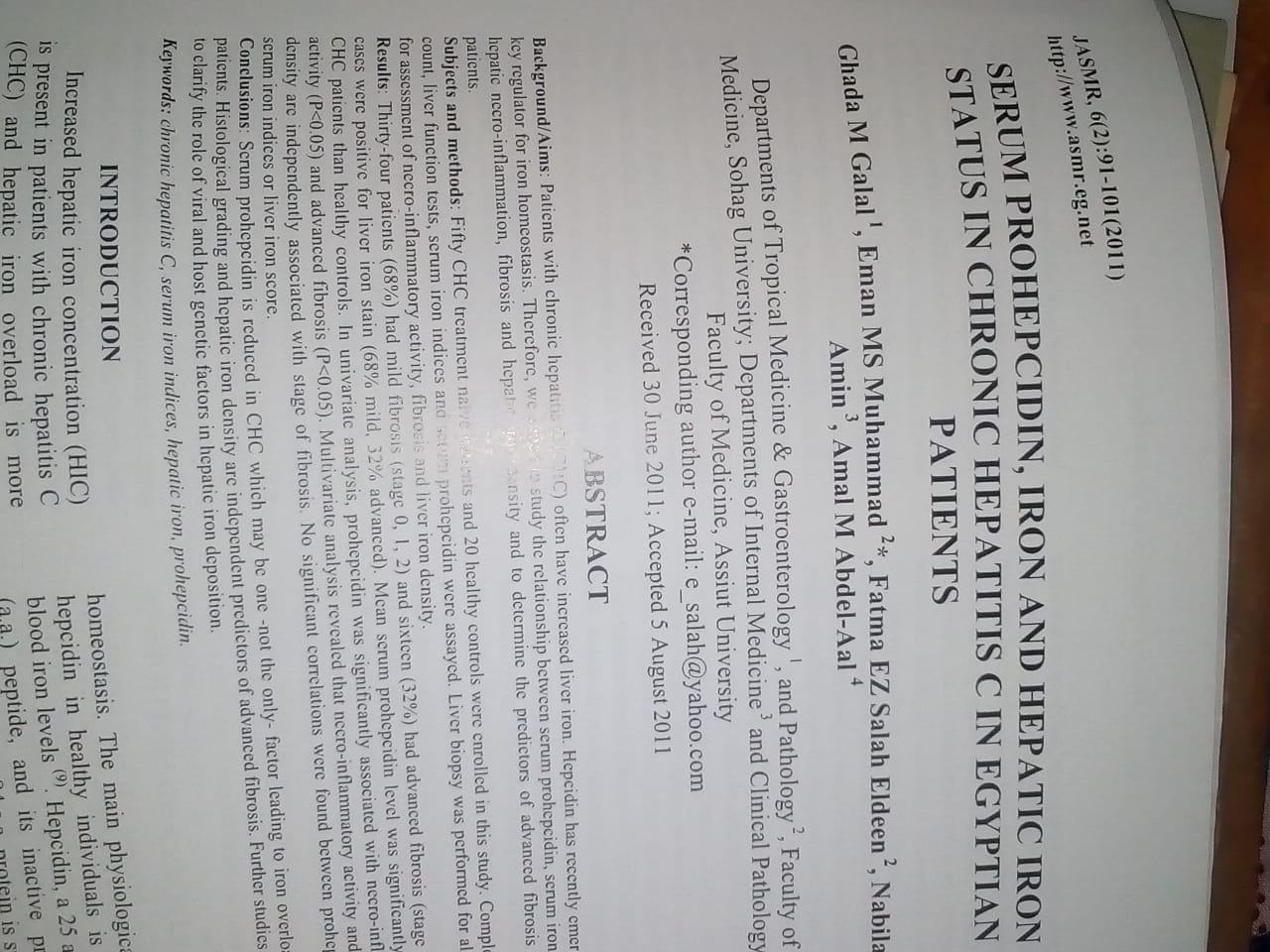Background/Aims: Patients with chronic hepatitis C (CHC) often have increased liver iron. Hepcidin has recently emerged as a
key regulator for iron homeostasis. Therefore, we aimed to study the relationship between serum prohepcidin, serum iron indices,
hepatic necro-inflammation, fibrosis and hepatic iron density and to determine the predictors of advanced fibrosis in these
patients.
Subjects and methods: Fifty CHC treatment naïve patients and 20 healthy controls were enrolled in this study. Complete blood
count, liver function tests, serum iron indices and serum prohepcidin were assayed. Liver biopsy was performed for all patients
for assessment of necro-inflammatory activity, fibrosis and liver iron density.
Results: Thirty-four patients (68%) had mild fibrosis (stage 0, 1, 2) and sixteen (32%) had advanced fibrosis (stage 3, 4). All
cases were positive for liver iron stain (68% mild, 32% advanced). Mean serum prohepcidin level was significantly lower in
CHC patients than healthy controls. In univariate analysis, prohepcidin was significantly associated with necro-inflammatory
activity (P<0.05) and advanced fibrosis (P<0.05). Multivariate analysis revealed that necro-inflammatory activity and liver iron
density are independently associated with stage of fibrosis. No significant correlations were found between prohepcidin and
serum iron indices or liver iron score.
Conclusions: Serum prohepcidin is reduced in CHC which may be one -not the only- factor leading to iron overload in these
patients. Histological grading and hepatic iron density are independent predictors of advanced fibrosis. Further studies are needed
to clarify the role of viral and host genetic factors in hepatic iron deposition.


